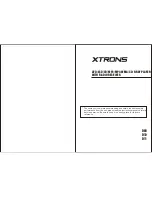
Features
11
■
the OpenCom 130 expansion module with additional interface cards provides
up to eight further S
0
ports (switchable between internal/external). An
overview of the available cards can be found under
Interface Cards
starting on
page 40,
■
the OpenCom 150 with interface cards provides up to 12 S
0
ports (switchable
between internal/external). An overview of all possible interface card combina-
tions can be found under
OpenCom 150 (5 Slots)
starting on page 43.
The firmware of the OpenCom 100 is designed for configuring up to 300 users.
You can connect the following devices to the OpenCom 100:
■
analogue terminals
■
Euro-ISDN terminals
■
ISDN telephones (on the U
pn
port) OpenPhone 52
■
DeTeWe system telephones
■
DeTeWe RFP 22 and RFP 24 base stations and DECT handsets (via an RFP 22/24
base station on the U
pn
port of an interface card)
Note:
On an OpenCom 131 the U
pn
ports are not DECT-en-
abled. This means, DECT base stations and DECT terminals
cannot be operated on this communications system.
An S
0
port can be used by Euro-ISDN terminals working in accordance with DSS1.
A U
pn
port is suitable for the OpenPhone range of DeTeWe system telephones.
RFP 22/24 base stations can also be connected to the DECT-enabled U
pn
ports on
interface cards for an OpenCom 130 and an OpenCom 150. An analogue port is
used by standard analogue devices.
If the CNIP (calling name identification presentation) feature is supported by your
network provider, the latter will show you the name of callers in addition to their
number for each incoming trunk call. The OpenCom 100 supports the display of
the name on system telephones. However, if you have created an entry in the tele-
phone book of the OpenCom 100 under the number of the caller, this will be dis-
played instead.
Summary of Contents for OpenCom 130
Page 1: ...130 OpenCom100 131 150 Mounting and Commissioning User Guide ...
Page 10: ...8 ...
Page 202: ...Index 200 Notes ...
Page 203: ......














































